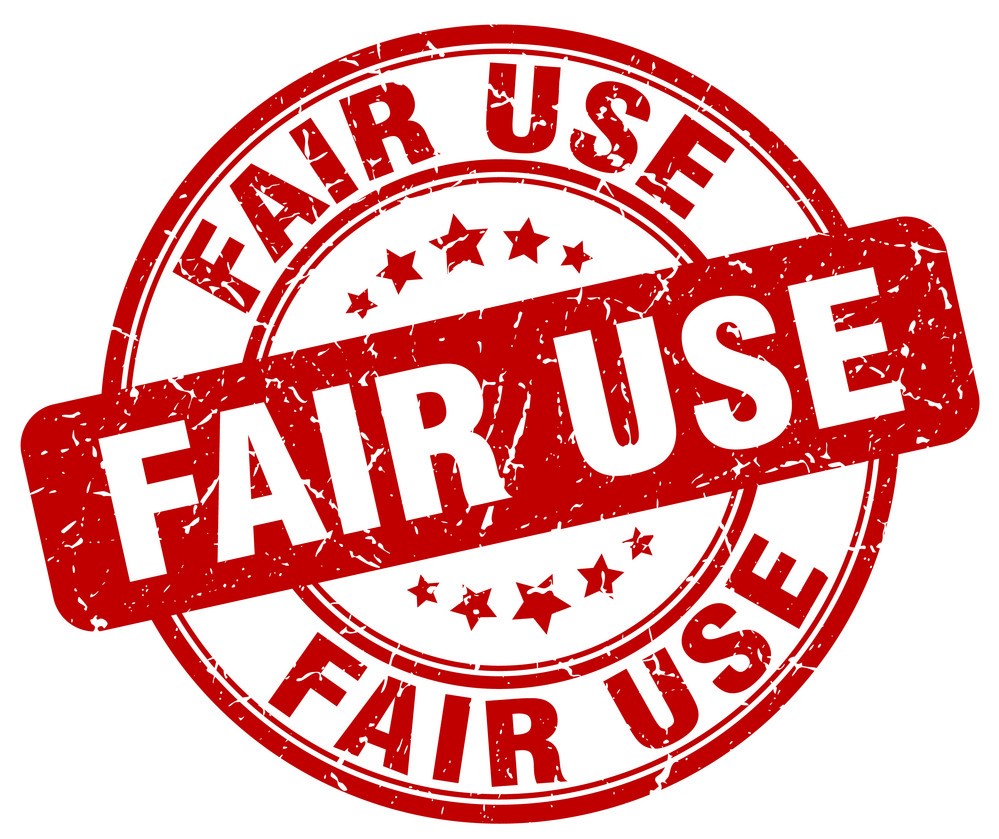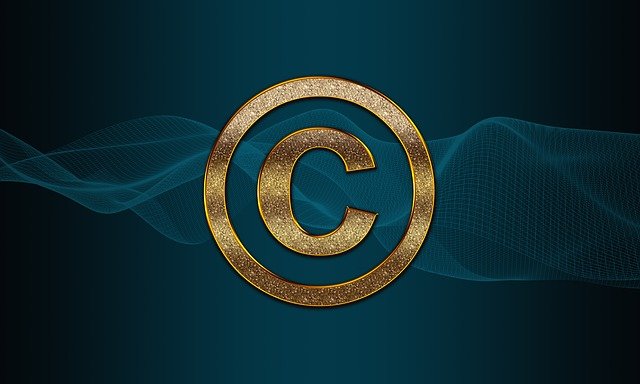Tag: Blogs
How to Incorporate a Blog into Your Content Marketing Campaign
To blog or not to blog? That is the question businesses often ask themselves. The answer to that question depends on the purpose of the blog.
For ordinary individuals, a blog is a means of communicating their ideas to the world. But for businesses, a blog can be a powerful weapon in their content marketing arsenal.
In this article, we will explore how blogs can become an effective part of a business’ content marketing strategy. We will also discuss how any brand can implement a blog as part of its overall marketing activity.
Using a Blog as Part of a Content Marketing Campaign

An effective marketing approach seeks to position a brand’s image in its consumers’ minds, therefore becoming the go-to reference for specific products and services.
This consideration suggests that consumers will automatically choose a specific brand over others based on their value assessment. Therefore, consumer perception of a brand’s value is the most effective means of positioning it.
Through content marketing, companies endeavor to provide value to consumers without sacrificing the brand’s overall proposition.
While opting to give away free product samples, running special offers, or discounting products can help the consumer become acquainted with a company’s product, they cannot effectively position a brand’s value proposition due to their sporadic use. Consequently, brands require a consistent and cost-effective approach without sacrificing their value proposition.
Brands must instead show consumers their products’ values by showcasing their usefulness in solving specific pain points. These pain points encompass consumers’ needs that require a specific solution. The challenge is for companies to show the consumers how their brand’s products and services can provide those solutions.
But how is it done?
Through a concerted content marketing approach, businesses must provide valuable information that consumers can use for their benefit. Often, this information is “free” to consumers. Thus, content marketing can deliver value consistently.
This “free” value is where blogs can significantly contribute to an effective content marketing campaign.
Blogs are a predominantly text-based medium. While blogs may include images, sound, and video, their true value resides in useful text. Blogs can tackle specific issues in a long format. As such, blog posts can be as long or short as marketers need them to be.
Editor and publisher Tom Foremski offers this insight into the nature of blogs: “Blogging is a communication mechanism handed to us by the long tail of the internet.” Indeed, blogging intends to serve as a means of communication. Therefore, content marketers must look at blogging as an ongoing conversation between brands and customers.
Generally speaking, blogs are a one-sided conversation. Unlike social media, blogs do not usually afford readers the opportunity for a two-way exchange. Nevertheless, blogs allow brands to communicate with consumers outside of traditional media outlets.
Moreover, blogs provide a cost-effective vehicle to communicate as much content as necessary, allowing brands to break down a large message into smaller, more manageable chunks. This approach gives consumers a chance to come back regularly.
Blogging Strategies

When deciding to start a blog campaign, companies must begin by coming up with a blogging strategy. This strategy should include the purpose for the blog, as well as the theme and topics that the blog will address.
Pinpointing Your Blog’s Purpose
The biggest misconception most marketers hold is assuming that a blog means an abundance of writing. Thus, this misconception frequently leads to writing for the sake of writing.
While it is certainly true that blogs require content, more does not always equate to better. A blog must strike the right balance between the amount and quality of content.
The most significant consideration in a blogging strategy is to determine its purpose. Hence, marketers must ask themselves what the purpose of their blog is.
For instance, will the blog fill a purely advertising role? Will the blog strive to be informative? Also, will the blog serve to educate consumers on a specific topic? The answer to these questions will determine the blog’s overall scope.
In general, a blog should play an informational role. This role entails providing consumers with content they can use to solve a perceived problem.
For example, consumers looking to save money can turn to a blog to find helpful suggestions. Ultimately, the blog’s scope is to create awareness on saving money. In doing so, the brand can attract attention to its financial advisory services.
Also, a blog’s content must reflect its intended audience and support that audience through the value it provides. Consequently, a blog ought to share the vision and passion of its audience.
A fashion blog, for example, should attempt to capitalize on its audience’s love for specific items. The brand uses the blog to convey meaningful content that resonates with like-minded individuals.
Deciding on a Theme for Your Blog Campaign
A critical decision content marketing teams must deal with pertains to topics and themes for their blog.
On the whole, all blogs must have an overarching theme. As such, a blog must build an identity that can hit home with followers. This identity needs to be indicative of the brand’s ideal consumer. As a result, all content should fall within the blog’s thematic umbrella.
While the particular topic could vary, they ought to remain within the blog’s overall scope.
Renowned online marketer Neil Patel has this to say about blogging: “If you want to continually grow your blog, you need to learn to blog on a consistent basis.” Certainly, this approach is highly useful.
Successful blogs post content consistently. Doing so creates an expectation in followers’ minds, as the followers become attached to the blog’s content. Ultimately, making consistency synonymous with the brand’s identity boosts its positioning.
International film star David Aston offers this highly insightful tidbit: “Successful blogging is not about one-time hits. It’s about building a loyal following over time.” This insight underscores the importance of patience.
All successful blogging strategies must have a long-term vision. By delivering consistent value, blogs can build a loyal following reader by reader.
Selecting Appropriate Blog Topics
The most complex part of any blogging strategy is selecting appropriate topics. Choosing topics begins with the blog’s overarching theme. Naturally, a blog’s theme needs to reflect the brand’s identity and value proposition directly.
Particular post topics can subsequently focus on specific areas of interest.
In addition, individual topics can address consumers’ queries. A common practice asks consumers to submit queries and comments. This approach creates a two-way interaction between brands and consumers. Therefore, consumers themselves become a source of the material.
The relationship between theme and topics must also closely align with the target audience. Thus, it is necessary to define the target audience precisely.
Age, gender, and socioeconomic status all determine consumer profiles. From there, the alignment between theme and topic must coincide with those profiles.
For instance, a sporting equipment brand aimed at young males should deliver relevant information on topics of interest. These topics may include equipment maintenance, storage, or durability. The brand could then state how its products can alleviate the issues consumers face.
Matt Wolfe, the creator of the WordPress Classroom site, sheds light on successful topics: “There’s a lot of information out there for free, so you’ve got to figure out what makes your information different.”
Wolfe’s comments accentuate the need for a unique value proposition. Given the immense amount of information online, a unique approach is paramount to ensuring success.
The most practical means of producing relevant topics is through customization. Customization involves developing a keen understanding of consumers so that content creators know what consumers want.
A good rule of thumb consists of simply asking consumers what they want to know. Undoubtedly, audiences will let their favorite brands know what they want.
Clever marketers openly acknowledge follower questions and comments. This practice allows followers to spot how significant they are to the brand. In turn, brands must reward their followers’ loyalty by incentivizing their participation. Often, followers only seek attention. Thus, brands must take full advantage of their followers’ willingness to participate.
Lastly, a great call to action on every blog post is to ask consumers to comment. By encouraging the consumer to comment, brands openly foster active participation.
Instead of spending resources on costly surveys, brands can harvest comments for future blog posts. This practice creates a positive feedback loop that keeps consumers coming back.
Renowned blogger David Calacanis once said, “The currency of blogging is authenticity and trust.” Brands can create that trust by acknowledging their consumers’ needs at all times.
Building trust requires brands to keep their content authentic. Therefore, generic information will not suffice. Effective content must become as specific as possible. That type of authenticity will help position a brand in its consumers’ minds.
Getting Started with a Blogging Campaign

Starting a blogging campaign calls for three essential items.
First, a blog must fit within the brand’s overall content marketing efforts. A blog should represent another weapon in a brand’s content marketing arsenal.
A blog can make a great addition to social media, video, and even conventional advertising, filling a gap not previously addressed. For consumers who prefer long format reading materials, the addition of blogs can prove to be incredibly valuable.
Former Twitter CEO Dick Costolo once remarked:
“The Internet destroyed most of the barriers to publication. The cost of being a publisher dropped to almost zero with two interesting immediate results: anybody can publish, and more importantly, you can publish whatever you want.”
The lack of barriers to publishing suggests that brands have unlimited possibilities to reach their target audience. Therefore, a blog is another publishing platform like any other.
The major difference lies in the lack of restriction. As a result, brands can personally engage their followers. This type of engagement is extremely difficult to achieve through traditional means.
Second, the brand must establish the blog’s purpose. This crucial decision hinges on choosing between a purely promotional or informational platform.
Blog marketing expert David Risley states, “Blogging is not a business by itself. It is only a promotional platform.” This statement showcases that blogging is a tool within a brand’s overall marketing scheme.
A blog with a promotional purpose delivers useful information while featuring the brand’s products. The products need to factor into the solution the consumer needs. Otherwise, the blog would revert into a shameless promotional plug piece.
An informational blog does not openly endorse the brand’s products. Like a promotional blog, it provides actionable information. However, the content intends to serve customers rather than pitch products.
Once the blog has a purpose, the last step is to define its content strategy. Topics comprise content strategy. As such, content creators must carefully address their consumers’ needs and interests. Initially, content creators can produce cross-cutting content. From there, consumer feedback can serve to define future topics.
Writer and entrepreneur Brian Clark offers this advice: “Don’t focus on having a great blog. Focus on producing a blog that’s great for your readers.” This advice points to the need for consumer-focused content.
As such, great writing can miss the mark if it is not relevant to followers. In contrast, great blogs resonate with their readers on a personal level. This degree of communication is possible when the content is tailored specifically for the target audience.
Last, a successful blog does not emerge from a mathematical formula. Many times, building an effective blog is a question of trial and error. Thus, content creators must learn to recognize what works and what does not. Eventually, a winning game plan will lead to delivering consistent value.
9 Great Sites for Generating Interesting Blog Topics
You want to start a blog and you know what you want to write about, but how do you keep it going? When you list out your blog topic ideas, you tap out at about 13. That doesn’t get you too far.
So, how do you continuously come up with interesting blog topics to keep your blog going?
Just let the wisdom of the web help you out!
9 Cool Blog Topic Idea Generators

Thanks to the wonderful world of technology, bloggers today can find fun, new, and interesting topics by using online blog idea generators. In their simplest form, blog topic idea generators ask you to enter the keyword you want to write about, and then generate topic ideas for you to work from.
For example, let’s say we’re writing about wine, or more specifically, pinot noir. You simply put that in the generator, hit Enter, and see what pops up.
Here are nine different generators and some examples of the type of ideas they created around the keyword “pinot noir.”
1. HubSpot’s Blog Ideas Generator
HubSpot is one of the most trusted names in web content and blogging. They know their stuff and they have a lot of great tools to help people create better content and improve their websites. The Blog Ideas Generator is just such a tool. It is, however, limited.
You can put up to five different nouns (think keywords!) into the text box to start generating ideas, but it will only give you five ideas for free. If you want more, you need to pony up a little information like your name, email, phone number, and website. Then, you’ll get 250 ideas from the keywords that you entered. That’s it. You’re set for the year!
Here are a couple of interesting blog topic ideas HubSpot’s Blog Ideas Generator poured out for “pinot noir.”
Pinot Noir: Expectations vs Reality. Interesting. What are the preconceived ideas about pinot vs. the truth? It’s a chance to open people’s eyes about the varietal.
7 Little Changes That’ll Make a Big Difference with Your Pinot Noir. Okay. We could talk about things like aeration, storage, using the right glass, food pairing, setting, temperature, and even drinking companion. See how easy this is?
2. Buzzsumo
Buzzsumo does it a bit differently. Instead of giving you a list of random topic ideas, what you’ll get is a list of top articles on your topic with a breakdown of social media metrics, links, and even an “evergreen score.” This is a great way to see what’s clicking out there already and possibly springboard your own ideas off of that.
For “pinot noir” we got:
The Health Benefits of Pinot Noir By Kelly Vaughan. Wait. We’ve heard that a glass of wine per day can be good for you, but does the varietal matter? This has a very shareable angle. You could build on this and have fun: “Why Pinot Noir Drinkers May Live Longer!”
Mob Wines: Pinot from a ‘Sopranos’ Star, Collectibles from Mobster John Gotti. Okay, here we’re using star power. That’s fun and great for SEO ranking. Who else loves a good pinot and is famous and interesting?
3. FX Tools Blog Post Idea Generator
This one is pretty simple. The page is a basic form that states, “Kill That Creative Block
With our blog post idea generator.”
Enter in your keyword and a headline instantly pops up just below the form. If you are intrigued by the headline, there is a button to “Google this idea,” which takes you to the Google search page. Another button says, “Next Idea,” so you can move on to another headline. It’s as straightforward and easy as possible.
For “pinot noir” we got:
The Next Big Thing in Pinot Noir. Trends always make for good blog topics. They’re timely and intriguing. In recent years, vineyards have begun making white pinot noir. Who knew?
Must-see YouTube Videos About Pinot Noir. YouTube videos are always popular, and you could help a few wine enthusiasts find some funny or informational videos that they’d maybe never find on their own.
4. Content Row Headline Generator
Content Row’s Headline Generator starts out simple like the FX Tool, but once you hit the search button, it’s a whole different beast.
It jumps to a page that gives you multiple headlines as well as the option to filter them based on tags like evergreen, clickbait, seasonal, or topical. You have to create a free account to use the filters, but it only takes about one minute to sign up with your email.
For “pinot noir,” using the clickbait filter, we got:
The Best Pinot Noir for Each Zodiac Sign. This would be fun to write and, hopefully, fun to read. What makes one pinot good for a Pisces and another perfect for a Scorpio?
The Frightening Affect [sic] of Climate Change on Pinot Noir. Okay, this is a bit more serious, but still a headline with intrigue. It turns out that climate change is a real issue for wine growers. See? We’re learning stuff!
5. Build Your Own Blog’s Idea Generator
Are you really stuck for ideas, including a topic? This idea generator doesn’t even give you the chance to put in a keyword. You just hit the button and up pops a headline. While that may seem entirely too random, it can still jumpstart your brain. It’s up to you to find connections to your chosen topic. Let’s give it a try.
Here’s What I Do to Get Myself Out of a Funk. This is very general, but that can work. Can wine drinkers get into a funk? Of course! You find yourself drinking the same pinot all the time. Maybe it’s time to get out of that funk by trying a new brand, pinot from a different region, or even try a box!
Why I’m Not a Fan of… Oregon pinot noir? French pinot? Any way you do it, you’ll have some people nodding in agreement while others shout out, “How dare you!” Blogging gold.
6. Portent Content Idea Generator
Portent’s Content Idea Generator is another nice and straightforward tool. Just plug in your keyword and a headline pops up. You have the option to save the idea or even tweet it out. At the top of the screen there’s a “My Saved Ideas” button that will keep all of your saved ideas from your session together, which is pretty handy.
How Pinot Noirs Can Keep You from Marrying the Wrong Person. Here’s the deal. These are randomly put together by a tool using your keyword, not really taking into account what your keyword actually is. That being said, maybe you could have fun with this one in a light, humorous way.
How to Be Unpopular in the Pinot Noir World. Anything that is popular with large groups of people comes with certain taboos. What are they and how do you avoid them?
7. Impact’s BlogAbout Title Generator
This idea generator works almost in reverse. When you go to the webpage, it pops up a headline with one or two blanks. You fill in those blanks with your keywords. Some clearly won’t fit, but it’s easy enough to keep refreshing and get new headlines until you see one you like.
New to _____? Here’s What You Need to Know. This works. It would be a simple pinot noir 101-type article. Could be the first one on the blog.
___ Tips to Help You Choose a ______. What kind of tips does the average pinot shopper need? Should they be looking at certain growing areas or vintages? Cork or cap? Another great, basic idea.
8. Tweak Your Biz Title Generator
This is yet another plug-and-play model, but with a couple of bells and whistles. It asks if your keyword is a noun or a verb. So simple, but it helps to give you better results. It also lets you choose if you want to get it in title case, sentence case, or all caps, which seems odd but it’s a nice touch.
10 Facts Everyone Should Know About Pinot Noir. Everyone likes a cool list of trivial facts about their favorite things.
10 Mesmerizing Examples of Pinot Noir. Even bargain hunters want to learn about the creme de la crème of their favorite wine. What is it and why is it so special?
9. Usetopic.com Blog Idea Generator
This is another simple one. Some of the ideas look like they’re coming from existing articles on the web, which is a little different than the others on this list. That can be a great way to find topics as long as you don’t copy but build on them.
Pinot Noir Champagne. Really? Someone makes champagne from pinot noir grapes? That’s very different and interesting. Great topic.
California Pinot Noir. Pinot noir is grown in many different areas around the world. This could launch a whole series of blogs where you tackle them one by one.
Tips for Blogging Success

Blogging is a great way to bring people to your website, boost your authority within your niche, and stay present on social media. If you own a business, you really do need a business blog to keep your website humming.
That being said, you don’t want to just rattle off random thoughts. You want to have a plan and build a successful blog. Here are a few tips to keep in mind:
- Choose a niche you love and stick with it.
- Set a goal. What do you want your blog to accomplish?
- Plot out a calendar to add timely posts.
- Be consistent on how often you post blogs.
- Make use of social media to promote your blog.
- Link to authoritative sources.
- Keep SEO in mind.
- Encourage comments and interaction.
- Edit! Either do your own editing, use software like Grammarly Pro, or have a professional look it over. Nothing looks more amateur than typos and poor grammar in a blog.
Getting great ideas for blog posts is just the beginning of the battle. A successful blog takes some thought and work, but you want to have fun with it, too. You can get great ideas from any of these nine idea generators, so what are you waiting for? Get blogging!
How to Manage and Organize Content for Blog Campaigns
Launching a blog campaign is an effective way to grow your business’ influence online. By posting regularly, it allows you to provide value for your customers by educating them on specific topics. More than that, it establishes you as an expert in your field, which can draw more attention from potential customers or clients.
Indeed, blogging has proven to be a very effective tool for businesses, but there must be a method behind how you manage your blog posts. This is where the blog campaign comes into play.
Sort the Fine Details Before You Write
Before you jump into organizing or even writing the content for your blog campaign, start by sorting the fine details you want to include in your posts. Jumping directly into the writing process will lead to confusion, both for you and your readers.

People who know a lot about something often want to say a lot about something, which can lead to providing information in a very unorganized fashion. Preplanning helps you bring your thoughts together on specific topics so that you don’t forget anything, and so you can organize it into a system that helps others learn.
Start by working through themes for your campaign. For example, a technology company would want to teach customers about the latest technology on the market. This may take several blog posts to cover all of the information, such as:
- What the new technology is
- How different it is from other options
- Its history and how it became what it is
- How to use it or what it is used for
- Why customers should want it
- Specific things that only technology aficionados would know
- How to get the new technology
- Why they should get that technology from you
From this list alone, there are a lot of specific things to cover about this new technology that will be interesting to clients and help companies get a boost in sales. To get the most out of this content, it needs to be organized into a campaign that follows logical steps. That way, you can effectively educate clients while creating an effective sales funnel so both sides benefit.
Pro Tip: Make a List of Content Points for the Year
An easy way to organize your content is to make a list of content points that you need to address throughout the year. Some of these will be easily predictable, such as holidays or special events. Industry trade shows and similar events also make great content points to write about. Here are some content points that are commonly used to organize blog content:
- Industry-specific themes
- Specific products or promotions
- Product launches, sales, or other special events
- Major business changes like an expansion or merger
Develop Your CTA
One of the most important parts of your blog to develop is your CTA or Call-to-Action.
This is the part that asks the customer to do something, such as buy a product or schedule an appointment. It is usually found at the end of the blog post with links to landing pages or other sales resources.

The CTA is important because it takes a reader from being passive to being active and engaged with your company. Without it, your blog will not drive sales.
Creating a CTA does not have to be complicated, but it does require specific pieces of information. Before you create any content, create a CTA.
Information for Your CTA
There are specific pieces of information that need to be included in your CTA. Otherwise, it may not be effective at directing your potential customers. Your CTA needs to include:
- Your company name
- Company primary contact information
- An invitation to what you want customers to do (i.e., “call us” or “click this link”)
- A link to a landing page or the business home page
Once you have this information, you can compile a CTA using a basic formula for each blog post. This formula will change slightly based on the topic and where the post sits in your sales funnel.
If the post is about general information about the business or is early in the sales funnel or campaign, your CTA will focus on getting clients to your website or a specific landing page to learn more.
If it is deep enough in your sales funnel to ask for the sale, then the CTA should focus on getting clients to the sale through a product page or a landing page that asks for the sale.
Your CTA should follow a template and look like the following:
- Sentence 1: Introductory sentence to transition from content into CTA.
- Sentence 2: Sentence on how the product can be valuable to the consumer.
- Sentence 3: Request for a specific action, with contact info or link.
- Sentence 4: Sentence on how the company can support the consumer.
Example (Early Sales Funnel)
Replacing your outdated TV with a new 80-inch flat-screen will make watching the game more enjoyable, but taking your old TV to the dump can be a challenge. It is much easier if you can find a service to pick up your TV and take it to the landfill for you. [Company Name] can help you get that old TV to the dump without you having to lift a finger except to call us at [company phone number]. Let us help you make every game special by making it easy to install your new TV.
Example (Late Sales Funnel)
Replacing a broken TV shouldn’t be a hassle, but large TVs are hard to get rid of. You want to order a new TV to watch the game with your friends, but your old TV Is standing in your way. Call [Company Name] at [phone number] to get that old TV out of the way. We’ll drag your old TV to the dump and let you enjoy your new TV without getting off of the couch.
Organize Content by Relevance
Once you know what your content will be about, put it in order of relevance for the goals of the campaign and the subject matter. There are several ways to organize your content by relevance.
Relevance to the Reader
Your content should be in the order of relevance to the reader if there are multiple subjects or the content becomes progressively more complicated. This is common on education websites where the content starts basic and becomes more complicated over time.
However, it is not always that straightforward since some parts make sense to go out of order. Businesses use this method when introducing multiple products or services. They may introduce them as a whole so that customers have a frame of reference for all of the options, then start to go through them individually.
Relevance to Time
Content can be organized based on chronological events.

History classes do this so that everything develops in a logical progression.
And companies use this when they are guiding readers through tutorials.
Every post builds on the one that came before it, so doing them out of order does not make sense for the reader.
Relevance to Topic
Another way to organize content is to organize by topic. This works best when the blog posts may seemingly have nothing to do with each other.
For example, writing blog posts about bananas, oranges, and apples that do not compare them means that each post has nothing to do with each other. However, you can combine the posts into a campaign that teaches readers about different kinds of fruit to make them better shoppers at grocery stores.
Group content based on your themes so that content related to a topic is treated in a single series of blog posts.
Build a Storyline
Having a method for organizing your content helps you get a feel for what posts need to go where and when, but that is not the end of the process. Once you have an idea of how to group your content, you need to organize it so that it builds a storyline.
For the most part, consumers do not make a purchase based on the technical specifications of a product. They don’t even buy because a product solves a problem for them. They buy because they connect with the narrative of that product.
You can use this to connect with readers and make asking for the sale more effective.
For this to work, every piece of content in the campaign must support a narrative in some way. Instead of focusing entirely on features, talk about how the product was developed and why customers enjoy it. Paint a picture of how customers can use it to make their lives better.
Once they can imagine using your product to resolve a pressing need for them, they are beginning to buy into the storyline.
It is important to remember that although the posts are working toward a common goal, every piece must be able to stand on its own.
Every blog post is a self-contained story of its own, and you want to make sure that customers get a good understanding of what you are writing about, even without access to other posts.
That way, readers can keep up with what you are writing without having to read back through old posts for everything to make sense.

Develop a Simple Tracking System
As you launch the campaign, it is important that you track the success of each post. Without a tracking system in place, you won’t be able to effectively evaluate your campaign strategy.
The good news is that your tracking system does not have to be complicated. A simple system could be to track KPIs on every post to see which ones perform the best.
If you have posts that do well and others that do not, figure out what makes some perform well and change your process to make the others more effective.
Try Different Campaign Strategies
Campaign strategies can always be changed to fit your needs. If you try to develop a successful campaign and don’t get the results that you want, pivot and find a strategy that works. You can try as many strategies as you like until you find the one that works best.
Successful companies make sure they can track the performance of their posts in a meaningful way. When they find a specific element of a post that works, they integrate it into their strategy and apply it to every post.
Even if you only get one thing that works out of your campaign, that is an improvement. Collect these little improvements and you will eventually create a campaign strategy that works reliably. All it takes is effort over time and a desire to consistently make improvements.
The Content Publishing Storyline
Every blog post campaign needs to tell a story. Customers buy based on the narrative of a product more than any other factor, and this is your key to making more sales.
For help building your campaign storyline, just use this helpful checklist.
Do I Need Permission to Use a Logo in my Blog?
You’re writing an article about your favorite cereal – the origin of the flake shape, the ingeniousness of the ingredients, the history of the brand name – and to fancy up the copy, you decide to include the company’s logo.
But then, you wonder: Is this permitted?
Are Logos Copyright-Protected?
The answer isn’t cut-and-dried: Some are; some aren’t. Sometimes a logo may be copyrighted. Or it may be trademarked.
What’s the difference, you ask?
Both actions are taken to protect intellectual property. But legally they are very distinct. In general terms, copyrights (©) apply to intellectual or creative works, while trademarks (™) protect commercial names, logos, and phrases.
In general terms, copyright gives exclusive rights to the owner of a literary, artistic, educational, or musical work.
Trademarks, on the other hand, are used to help companies represent their unique brand.
Corporate logos, therefore, are typically trademarked. This provides the company some amount of protection against someone trying to pass off a product represented by their logo.

But many corporations also opt to copyright their logos for additional legal identity protection because copyright law and trademark law each have some gaps.
According to the United States Patent and Trademark Office, “A trademark includes any word, name, symbol, or device, or any combination used, or intended to be used, in commerce to identify and distinguish the goods of one manufacturer or seller from goods manufactured or sold by others, and to indicate the source of the goods.”
A completely different office, the United States Copyright Office, handles copyright issues. They explain, “Copyright commonly does not protect names, titles, slogans, or short phrases. You will have to look into trademarking. Copyright protects works of original authorship such as text, artwork, photographs, sound recordings, screenplays, music, lyrics, etc.”
Are All Logos Protected?
Regardless of whether a logo has been registered or not, the creator still has certain protections.
Graphic designer, Stephanie Asmus, points out that a logo doesn’t actually need to be copyrighted or trademarked to be protected: “The moment a logo is created, so long as it’s justifiably original, the owner has protectable rights to that creation under what’s called ‘common law’.”
This means that even if a logo has not been registered to an “owner,” it can’t be usurped for use by another entity. Common law provides legal protection to guarantee that the “owner” is the sole entity permitted to use the logo as an identifier in their industry.
What really matters is protecting the integrity of the graphic.
As Elizabeth Potts Weinsten, founder and lead attorney at EPW Small Business Law PC, puts it, “Trademarks are designed to protect customers from confusion… If you use the logos in a way that won’t confuse customers or the public, then you probably are not infringing the trademark.”
So… Am I Free to Include the Logo?
According to upcounsel, “You need permission to use a logo unless it is for editorial or information purposes, such as when a logo is used in a written article or being used as part of a comparative product statement.”

This type of use is called fair use. Basically, as long as your intent is not to profit from the logo, you should be able to replicate it to accompany your article.
So, this is great news for, say, bloggers just wanting to spruce up the page with a splash of color.
But there’s a caveat.
Keep in mind that the company likely toiled long and hard to come up with the image that graphically represents their brand. As such, they might have very strict usage guidelines – from the exact colors that must be used and whether it can be recreated in black and white to size restrictions and any accompanying tagline or words to even the required white space around the image.
As a general rule of thumb, don’t make any changes to their image.
Your best bet is to check with the company’s website or media relations department to find out what their specific brand usage guidelines are and how they relate to using their logo.
What Are Infographics?
Infographics are visual representations of quantitative and qualitative data and other types of information. Infographics provide clear and easy-to-understand formats that enhance an audience’s ability to grasp patterns and trends in a topic.
Infographics are highly visual. As such, they contain minimal text. Mainly, images are attached to numerical data to facilitate comprehension of large or complex data sets.
Their aim is to engage the target audience by providing interesting and useful facts. Because of this, opinions are not commonly represented in infographics.
Infographics may be standalone documents or part of a larger document. Infographics can also summarize an entire document, thereby facilitating its distribution and readability.

Uses of Infographics
Infographics have the following uses:
- Provide a quick and easy summary.
- Facilitate complex processes.
- Visually present research information or survey data.
- Sum up a long text.
- Compare and contrast analyses.
- Generate awareness on a topic or issue.

Types of Infographics
- Thematic. Used to raise awareness of an issue or topic.
- Reference. Used to present data from research or to support claims.
Governments commonly use infographics to provide information, while companies often use them as a sales and marketing tool.
Parts of an Infographic
While there is no specific format for infographics, they contain the following parts:
- Visual elements (colors and graphics)
- Content (data and other information)
- Key Points (main takeaway)
Often, a simple statement summarizes the main takeaway of the infographic. Nevertheless, the main focus of the infographic is the presentation of data. Interesting color schemes and layouts serve to highlight the data and facilitate comprehension.

8 Reasons Why You Really Do Need a Business Blog
In this day and age, people spend a lot of time online reading blogs. After all, they are an excellent source of entertainment and information. Some make you laugh, while others help you understand complex concepts or even products.
Following the blogs of your favorite businesses keeps you in the loop and makes you feel like you’re a part of its inner circle.
You know all of this to be true, but for some reason, you’ve never created a blog for your own business. The questions are: Should you? and Why?
The short answer is: Yes, a company blog is a great idea! While it’s not as simple as it may seem at first glance, having a blog for your business, any business, has a lot of upsides.
Here are 8 reasons why 2021 should be the year you dive in and start blogging for your business.
8 Reasons Why You Should Start a Blog

1. It Reinforces Your Brand Voice
Your brand has a unique voice. If it doesn’t, it’s time to change that. Every ad, product description, and webpage should reinforce that voice. It could be friendly, funny, authoritative, or any other voice that fits what your brand is all about. It needs to be consistent in everything you do.
A blog is a perfect way to hammer that home. Longer blog pieces allow you to let that voice shine and give your brand not just an identity but a personality.
2. It Increases SEO Rankings
If you own a brand and have a website, you know the importance of pleasing those search engines, especially Google. One of the most important factors for great SEO rankings is to make your website relevant and useful to consumers. Your blog does just that!
Think about the questions your customers might have and build your blog posts around them. As your blog grows, it will become a trusted resource in your industry, and your SEO rankings will climb higher and higher. That’s just smart business.
3. It Increases Website Traffic
This goes hand-in-hand with reason number 2. If your blog is full of information that people want to know, you’ll climb in the SEO rankings, and you’ll get more website traffic as a result.
:
For example, let's say that you sell Earth-friendly baby products. You carry cloth diapers, and some people come to your site because they know you have them. But if you add a blog post titled 'Should I Use Cloth or Disposable Diapers?' new parents who are researching that very question will be led to your site to learn more. Once they are there, who knows what else they'll see, love, and buy!
4. It Provides an Opportunity to Establish an Email List
You don’t always want to wait for your customers to come to you. When you create a blog, include a CTA (Call To Action) to give your readers an opportunity to sign up for emails or newsletters from you.
These communications can let them know when you have new products or even new blog posts. This keeps customers connected to your business in a fun and meaningful way.
5. It’s a Platform to Introduce New Products, Services, and Events
When you introduce new products or are hosting an event, there’s only so much you can say on your product page or advertisements.
A blog gives you the bandwidth to delve into the background, provide case studies, and flesh out the reasons you are promoting this product, service, or event.
Even if you don’t want to do a whole blog about something new, it can find its way (with a link to where the reader can find more information) into the copy. It’s a great way to highlight new items or events that you want your customers to see without spending a ton on advertising.
6. It Establishes Your Subject Matter Authority
If you stay consistent and write about your subject with proper research, you’ll grow to become a web authority on the topic.
Think of any topic or product you enjoy. Chances are, you can name one or two people or businesses that are your “go-to” sites to learn more about it. Those are your subject matter authorities.
Becoming a subject matter authority boosts your status in the eyes of your customers as well as search engines. It’s a goal every business blog should want to reach.
7. It Goes Hand in Hand with Social Media
You know that social media is a critical part of your business plan, but what do you put on it to engage your customers? Your blog is the perfect way to keep things fun and fresh on social media.
Think about that diaper blog post. If you shared it on Facebook, Twitter, and other social media posts, do you think it would get people talking? Probably. The new parents who are asking that question will find a whole lot of experienced parents weighing in, and your company and your blog post will be at the center of that conversation.

Nothing keeps your business active in your customers’ minds better than a fabulous social media presence, and a blog can help make that happen.
8. It Keeps People Coming Back to Your Website
When you put it all together, from becoming a subject matter authority to establishing email lists to social media and more, the real result of creating a great blog is that it keeps people interacting with your business and coming back to your website over and over. That means you stay relevant and top-of-mind for your customers.
New customers are great, but returning customers are the foundation of any business.
But, what if I’m not a writer?
As you can see, the benefits of a blog for your business are many.
But we can’t forget to address the elephant in the room: You may be hesitant to start a blog for your business because you aren’t a great writer or simply don’t have the time or desire to write the blog.
That’s just fine. You can hire a professional writer to do that part. In fact, unless you are a superb creative writer, it is a smart idea to let a pro handle it.
As the insider for the business, your job is to figure out what to write about. New products, your brand’s mission, fun and exciting stories about customer interactions (with their permission, of course!), and how-tos are all great ideas.
Just come up with some topic ideas, and let your writer take care of the rest.
Conclusion
These days a blog is expected from your business page. Customers look for it to learn about your business, your products, and your brand’s identify. The best part is that it can work wonders for your brand with minimal investment.
One thing to keep in mind, though, is that your blog needs to be done well. If you want to build up all of those things we just talked about, your blog needs to look good with a well-built webpage and eye-catching photos, be consistent, and most important, be well written so that people will actually want to read it.
And remember, it’s OK to hire out any of those tasks if you don’t feel comfortable doing them. Compared to traditional or pay-per-click advertising, you can build your blog for minimal investment and boost your brand’s web presence exponentially.
So, what are you going to blog about?
What is Content Marketing?
Content marketing is a marketing approach that’s focused on delivering valuable and relevant content to a target audience. It aims to consistently attract followers by engaging them with content that addresses their particular needs.
Brands use content marketing to generate leads and improve profitability by converting more leads into sales.
While traditional marketing focuses on pitching products and services to a target audience, content marketing is about providing clients and followers with valuable content. This content should help the target audience solve a relevant problem or issue in their lives.
Content marketing is good for both companies and clients, as it:
- Drives sales higher by engaging clients consistently.
- Reduces costs by honing in on a specific market niche.
- Fosters client loyalty by creating a clear narrative.
The following tactics make content marketing highly effective:
- Makes use of brand content in social media marketing.
- Boosts Search Engine Optimization (SEO).
- Bolsters inbound marketing by compelling users to engage with the brand.
- Improves brand position by delivering “free” and relevant content.
Content marketing also covers a wide range of media:
- Email marketing campaigns are highly effective through the use of newsletters and bulletins.
- Social media profiles are key to driving text and visual content.
- Video streaming platforms enable brands to deliver high-quality content.
- Print materials can provide a classic touch, especially with older clients.
- Traditional media such as radio, print, and television are perfectly suitable for all clients.
The most important thing about content marketing is that it’s not about selling a product. Instead, it’s about engaging clients as much as possible, so the brand is always present in their minds.







